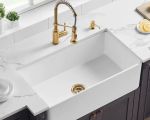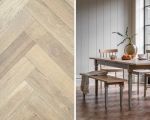- 1-Preparation-and-Tools-Needed
- 2-Step-by-Step-Installation-Process
- 3-Tips-for-Perfect-Floating-Shelves-in-Living-Room
- 4-Common-Challenges-and-How-to-Overcome-Them
- 5-Real-Life-Installation-Story
- 6-Finding-the-Best-Floating-Shelves-and-Services
1. Preparation and Tools Needed for Installing Floating Shelves in the Living Room
Installing floating shelves in the living room can transform your space by adding functional storage and stylish decor. Before beginning, it's essential to prepare adequately. First, choose the right shelves that match your living room's aesthetic and can support the weight of your items.
Gather the necessary tools: a stud finder, drill, level, measuring tape, pencil, wall anchors, screws, and a screwdriver. Ensuring you have all these items beforehand streamlines the process and avoids interruptions.
Equally important is selecting the installation location carefully. Consider wall material and stud placement, as anchoring into studs provides the most secure hold for your shelves.
2. Step-by-Step Installation Process for Floating Shelves in the Living Room
The process begins with marking the desired height and position of your shelves. Use a pencil and level to ensure straight, even placement. Employ a stud finder to locate studs behind the wall; mark these spots for drilling.
Next, drill pilot holes into the studs or use appropriate wall anchors if studs are not available at your marks. Attach the mounting brackets or hardware that came with your shelves firmly to the wall.
Once the brackets are secured, slide or place the floating shelves onto the hardware, ensuring a snug and flush fit. Double-check with a level that the shelves are perfectly horizontal before loading them with items.
3. Tips for Perfect Floating Shelves in Your Living Room
To achieve a professional look, measure twice before drilling and always use a level to avoid crooked shelves. Opt for heavier-duty anchors if your walls are drywall without studs. Additionally, spacing your shelves evenly and choosing complementary decor items enhances the overall aesthetic.
Another useful tip is to consider the weight capacity of your shelves and avoid overloading. Mixing books, plants, and decorative pieces can balance function with style effectively.
4. Common Challenges and How to Overcome Them
One common challenge is finding studs in inconvenient locations, which can limit shelf placement options. In such cases, high-quality wall anchors can provide extra support. Another difficulty is uneven walls; slight adjustments with shims or choosing adjustable brackets can solve this problem.
Sometimes, floating shelves can appear unstable if not mounted securely. Ensuring all screws are tight and the brackets fit well eliminates wobbling and safety concerns.
5. Real-Life Installation Story: Transforming a Living Room with Floating Shelves
Jessica, a homeowner passionate about DIY projects, wanted to maximize her living room storage without sacrificing style. After researching “how to install floating shelves in the living room,” she selected sleek wooden shelves and carefully followed installation steps. The result was a stunning display for her favorite books and plants, which not only beautified her space but also impressed guests.
Jessica shared that the process, though initially intimidating, became enjoyable and rewarding. Her story highlights how floating shelves can enhance both the function and design of a living room when installed thoughtfully.
6. Finding the Best Floating Shelves and Services for Your Project
Choosing quality floating shelves and reliable installation guidance is crucial for long-lasting results. Our platform, Improvement, offers curated recommendations for the best floating shelves and professional services tailored to your living room’s style and structure.
Whether you’re a DIY enthusiast or prefer expert help, Improvement connects you to top products and trusted professionals who can assist you in achieving beautiful and sturdy floating shelves that add value and charm to your home.








